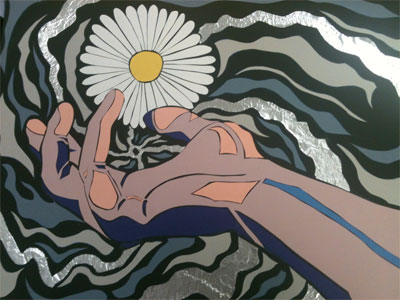All Nonfiction
- Bullying
- Books
- Academic
- Author Interviews
- Celebrity interviews
- College Articles
- College Essays
- Educator of the Year
- Heroes
- Interviews
- Memoir
- Personal Experience
- Sports
- Travel & Culture
All Opinions
- Bullying
- Current Events / Politics
- Discrimination
- Drugs / Alcohol / Smoking
- Entertainment / Celebrities
- Environment
- Love / Relationships
- Movies / Music / TV
- Pop Culture / Trends
- School / College
- Social Issues / Civics
- Spirituality / Religion
- Sports / Hobbies
All Hot Topics
- Bullying
- Community Service
- Environment
- Health
- Letters to the Editor
- Pride & Prejudice
- What Matters
- Back
Summer Guide
- Program Links
- Program Reviews
- Back
College Guide
- College Links
- College Reviews
- College Essays
- College Articles
- Back
Unrealistic Beauty Standards
The world has always had beauty standards- some of them unrealistic. Beauty standards have changed along the years for both men and women. In society back then and today, beauty was and still is a very important subject.
The feminine beauty ideal is "the socially constructed notion that physical attractiveness is one of women's most important assets, and something all women should strive to achieve and maintain" (Wikipedia "Feminine beauty ideal" 2019). Beauty standards for women have changed a lot along the years, though, none of them have been easy to achieve. Today, women have even higher standards, trying to achieve the ideal body type, face, physical attributes. These are all getting more impossible to reach as they change.
Women aren’t the only ones with harsh beauty standards, men too have had lots of beauty standards over the years. Recently, the newer beauty standards for men are getting even more unrealistic. The ideal men being presented as tall, masculine, and lean, or else “they’re not a real man”.
Beauty standards have big effects on people. They can often lead to negative body image problems and problems with self-esteem. This leads to constant self-criticism and can lead to eating disorders, sadness, anxiety, depression, anger, and even shame or guilt. According to Psychology Today, about 54 percent of young women and 41 percent of young men, both ages from 13-19 say they are still dissatisfied with their looks. 57 percent of women and 38 percent of men ages 20 to 29 say the same thing about themselves.
Beauty standards aren’t only problems for adults, they can affect anyone at any age, from adolescence to adulthood. In fact, children and teens compare themselves to others by viewing others and focus on their own flaws and how to make themselves more ideally perfect. According to Raising Children Network, an Australian parenting website, a child wants to be able to fit in even more as they reach puberty. “As your child reaches puberty, fitting in and looking the same as other people becomes even more important. At the same time, your child’s body is going through lots of changes, inside and out. This can mean your child might feel more pressure to look and act a certain way” (Raising Children Network "Body image: pre-teens and teenagers" 2017).
One of the biggest ways of how people promote these unrealistic standards is social media. Psychologists have observed negative effects of social media on the mental health of children and teenagers. The effects of social media on teens are much stronger, even an hour on social media can make a teen miserable. Children and teenagers compare themselves to others and think lowly of themselves.
Unrealistic beauty standards today are seen as the norm, although no one completely represents the ideal beauty standards of our society. Beauty standards are a social construct and lead to negativeness. The world will keep changing these beauty standards and making them more ridiculous, if we can achieve them or not.

Similar Articles
JOIN THE DISCUSSION
This article has 0 comments.
